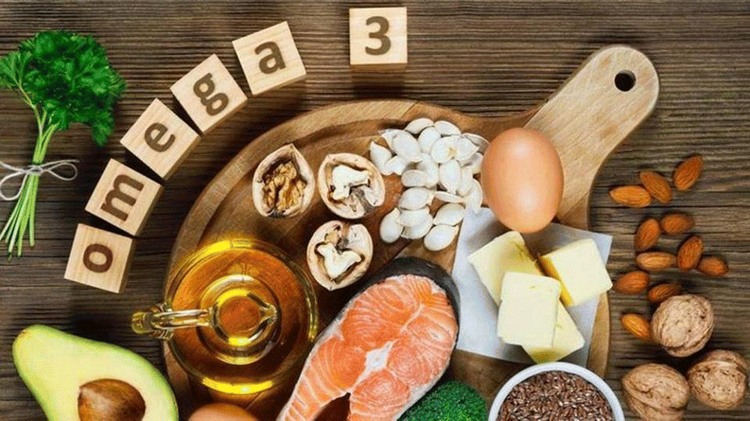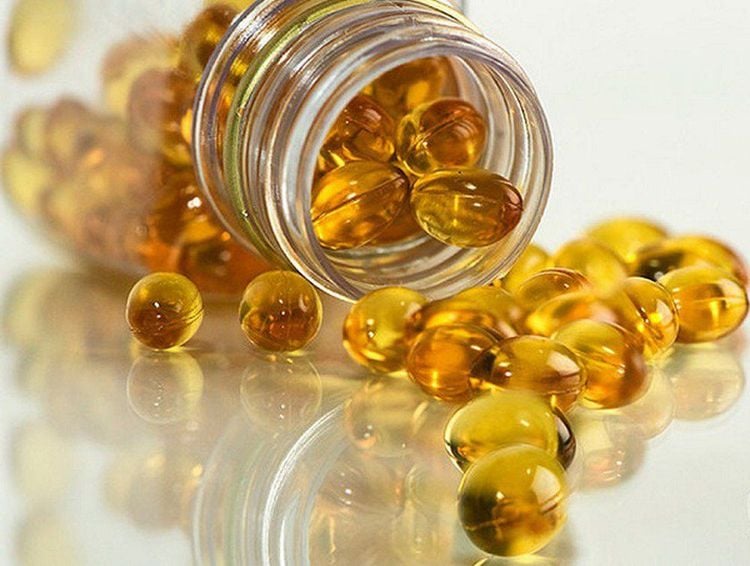This is an automatically translated article.
"Fat fish" includes salmon, tuna, sardines, and mackerel, these fish are considered the most delicious and healthiest dishes from the sea when they contain omega-3 fatty acids, a type of good fat. unlike the saturated fat found in most meats. So is eating fish fat? Is eating fish fat? These are the questions that are currently being asked by many people?1. Benefits of using fish for human health
Omega-3 fatty acids in fish have been shown to help reduce triglycerides, a type of fat in the blood. Although experts are uncertain about the exact mechanism, omega-3 fatty acids may slow the growth of plaque in the arteries and reduce inflammation throughout the body.Several studies over the years have shown the benefits of fish fats, as getting daily omega-3 fatty acids from fish oil can reduce triglyceride levels by 25% - 30%. Based on mounting evidence, the FDA has approved a new "qualified health claim" for the effects of omega-3 fatty acids (EPA and DHA) in reducing the risk of heart disease and coronary artery disease. It also allows manufacturers or distributors of foods containing omega-3 fatty acids to advertise that the product may reduce the risk of heart disease.
Fatty fish is usually cold water. The American Dietetic Association recommends choosing fatty fish, including: salmon, tuna, herring, sardines, mackerel... Only 85 grams of salmon provided about 1 gram of EPA and DHA. If these fish are not to your taste, you can also try whitefish or haliburton salmon. One serving of salmon (100 grams) provides about 1 gram of EPA, plus DHA.
However, you should remember that how the fish is prepared is just as important as how the fish is eaten. The way any food is prepared, especially fish, can make a big difference in your blood cholesterol levels, a spokesperson for the American Dietetic Association (ADA) said. Any health benefits from fish will be negated if you fry the fish in vegetable oil. An ADA spokesperson recommends enjoying tuna with mayo, low-fat pickles and wholemeal bread, or possibly a tuna sandwich. These are all healthy healthy options.
You can also get a very quick, delicious meal by microwaving salmon and other fish in just a few minutes.

Acid béo omega-3 trong cá giúp làm giảm chất béo trung tính, một loại chất béo trong máu
2. Demand for fish content
The ADA and the American Heart Association also recommend that people eat at least two servings of fish per week. In case you have heart disease, you should eat one gram of EPA or DHA per day, preferably from fish. However, it is important to find the type of fish that suits your taste. In some cases, if fish is not possible, you can choose nuts such as: walnuts, flaxseeds, canola oil and eggs rich in omega-3.Omega-3 fatty acids inherently have a lot of benefits when they contain a lot of calories, so if we regularly use fatty fish in our diet, we can also gain weight from this fish.
In addition, eating too much fish can also bring other health risks, because mercury is still present in some marine fish such as tuna. These risks can be especially worrisome for young children, women who are pregnant or planning to become pregnant.

Nhiều chứng minh đã cho thấy, cá hồi là loại cá tốt nhất cho tim mạch
3. Some fish are rich in Omega 3 fatty acids
3.1. Albacore Tuna
Each of us should maintain eating fatty fish 1-2 times / week with a cooked serving of about 100 grams depending on body weight. Or you can also use canned tuna in sandwiches or salads, because this is a quick, cost-effective solution. Albacore tuna has 3 times more omegas than skipjack and with fresh tuna the belly is always fatter than the meat on the sides.3.2. Farmed salmon
You may not know, but now many evidences have shown that salmon is the best fish for the heart. And those raised in farms consistently have the highest levels of omega-3s of any seafood. Especially farmed salmon is also much cheaper than wild salmon.3.3. Wild Salmon
Wild salmon mainly feed on algae and plankton. So they tend to be less fatty than farmed salmon. However, wild salmon is still an excellent source of omega, as this fish is an especially good choice for pregnant and lactating women because wild salmon is high in mercury, PCBs and other trace minerals. lower toxicity.3.4. Atlantic herring
Atlantic herring is usually pickled in vinegar and is eaten throughout Scandinavia and parts of Europe. You can also soak the fillets in wine or cream and serve with hard-boiled eggs, sour cream or potatoes for a nutritious side dish.3.5. Boy
This is a shellfish that contains a lot of fatty acids. An average of 28 grams of mussels has more omegas than lobsters, shrimp and scallops.3.6. Anchovy
The Spaniards marinated anchovies in oil and vinegar to make tapas called boquerones and served with bread and beer. Like herring, this tiny fish provides a large amount of omega-3 for our body.3.7. Swordfish
Swordfish has fragrant and light meat that is suitable for grilling. However, you need to be careful when using this fish because they have a high ability to absorb more mercury and other pollutants from the diet, because swordfish often eat small fish. When you eat fish with high levels of methylmercury, it can affect the brain and nervous system. Especially very harmful to the fetus, newborn. Children and women who are pregnant or breastfeeding should therefore avoid swordfish, along with shark, puffer, king mackerel and sailfish.
Thuốc bổ sung dầu cá có thể không mang lại nhiều lợi ích cho cơ thể chúng ta
3.8. Pilchard
Sardines have much less mercury buildup in their meat than larger, older fish. Therefore, sardines also bring very high nutritional value to our body.3.9. Alaska Pollock
Alaska Pollock, also known as walleye, is the most commonly caught seafood in the United States. The flesh is white and light, making it ideal for imitation crab, shrimp and scallops. Alaska Pollock is generally low in mercury and other toxins and is also good for the environment. That's because Alaska Pollock is caught in the wild, and government agencies make sure that commercial fishermen don't overfish.3.10. Fish oil
Fish oil supplements may not bring many benefits to our bodies. A recent review of 10 studies found that older adults with heart disease and related conditions who take omega-3 fatty acids every day seem to have no or fewer heart attacks or strokes. They usually take fish oil supplements with dosages ranging from 226 to 1,800 milligrams. However, researchers have yet to confirm whether higher doses of fish oil can make much of a difference.Once you have a clear understanding of the nutritional content, the fat in the fish you can balance to give yourself the most suitable diet from fish. In case, if you are having many health problems, you should go to the hospital for a doctor's examination and further advice.
Please dial HOTLINE for more information or register for an appointment HERE. Download MyVinmec app to make appointments faster and to manage your bookings easily.
Source: webmd.com












